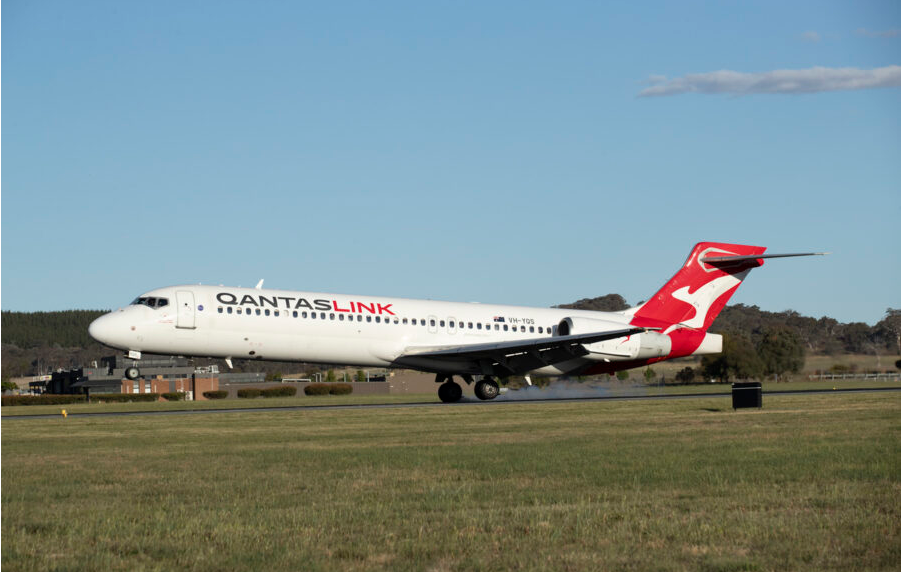
The last Boeing 717 in QantasLink’s fleet completed its final passenger service on October 26, 2024. The flight closes a significant chapter in Australian aviation history. The farewell flight QF1511 touched down in Canberra around 6 PM local time on the weekend. It was crewed by veteran pilots with over 100 years of combined 717 flying experience.
Operating as ‘Great Otway National Park’ (VH-YQS), the aircraft flew between Sydney, Launceston, and Canberra on its last day. This particular 717 served QantasLink for nearly 11 years. During its operational service, it completed over 15,000 flights and transported more than a million passengers across Australia.
The Boeing 717 fleet has been crucial for both QantasLink and Jetstar over two decades. These aircraft were particularly valued for their ability to serve shorter routes and regional airports. They were capable of carrying approximately 100 passengers. QantasLink stands as one of only three airlines worldwide still operating these versatile jets.
The Qantas Group is replacing its fleet of 20 Boeing 717s with 29 modern Airbus A220s. This transition forms part of a broader fleet renewal strategy that will transform the airline’s domestic and regional services. Currently, four A220s are already in service, with the next aircraft, nicknamed ‘Tasmanian Devil’, scheduled to join the fleet by year’s end.
QantasLink CEO Rachel Yangoyan reflected on the 717’s legacy: Today’s final flight represents a pivotal moment in Australian aviation. The 717’s distinctive T-shaped tail has become an iconic sight in our skies over the years.
She added, While we’re saying goodbye to an aircraft that has served us exceptionally well, we’re excited about the A220’s capabilities. Early feedback from both passengers and crew has been overwhelmingly positive.
The Boeing 717, originally known as the MD-95, earned the nickname Mad Dog due to its powerful engines and distinctive sound. 156 Boeing 717s were produced with YQW, The Tassie Devil, being the last 717 to be built at Boeing’s Long Beach assembly facility in California. It rolled off the production line in 2006. The aircraft type first joined Qantas through the acquisition of Impulse Airways in 2001. 14 of the 717 fleet were then converted to support the launch of Jetstar in May 2004 before moving back into QantasLink. 
The new Airbus A220 represents a significant leap forward in regional aviation technology and passenger comfort. The aircraft features an expanded capacity of 137 seats, configured across two distinct cabins. Business class offers 10 seats in a comfortable 2-2 layout, while Economy provides 127 seats arranged in a 2-3 configuration. Passengers will immediately notice the aircraft’s remarkably large windows. These are the biggest of any single-aisle aircraft, creating an enhanced sense of spaciousness throughout the cabin.
Modern connectivity features heavily in the A220’s design, with fast, complimentary Wi-Fi allowing passengers to stay connected throughout their journey. The improved Qantas Entertainment App enables content streaming directly to personal devices, while integrated device holders and multiple charging options. This includes both USB-A and USB-C ports, ensure passengers remain powered up. Business class passengers enjoy the additional luxury of wireless charging pads.
Comfort improvements extend to every seat, with Economy class featuring enhanced padding compared to the retiring 717s. Storage space has also been significantly improved, with overhead compartments offering 20 percent more capacity for all passengers.
The A220 delivers a dramatic reduction in noise emissions by up to 50 percent. It achieves a 25 percent decrease in carbon emissions per seat compared to its predecessor. The final flight of the iconic 717 closes a chapter for Australian aviation and opens another, with the A220 now set to take hold in regional Australia.


